It seems like the Swiss and French painter Félix Vallotton (1865 – 1925) was a fairly provocative fellow. It would have been fun to grab a coffee with him and he definitely would have been my favorite coworker, the kind with lots of scandalous, and probably inaccurate, office gossip.
Felix Vallotton, Self-portrait 1908
Vallotton disdained the hypocrisy of the French bourgeoisie and used his art as a way to expose the pretense of the upper class. While Toulouse-Lautrec was camped out in Parisian nightclubs during this same period, Vallotton was lurking in bedrooms and balconies, anywhere that shadows offered partial concealment of hidden vices.
In The Met’s 2020 show featuring the artist, the exhibit text said that Valloton “chronicled fin de siècle Paris like no other artist of his generation”. As I write this my own country has a pretty hardcore fin de siècle vibe going on, and so it seemed like a good time to find inspiration in how Vallotton created a world drenched in shadows.
Vallotton first introduced the world to the hypocrisy of high society with a set of woodblock prints he made after seeing an exhibit of Japanese prints, including some works by Hokusai. Intimités (Intimacies) was a bold step in printmaking; huge swatches of black ink filled the print and provided very little detail. The prints depicted illicit moments of romance shrouded in black ink.
Vallotton transferred his aggressive use of shadows from his prints to his paintings. This nocturne painted by Vallotton in 1894 offers us a landscape that is torn into 4 parts with two stripes of black paint.
In The Dinner we see four people seated at the family table. Such a domestic scene painted by many other artists would be a serene moment of family bonding. In Vallotton’s creation, the moment is mysterious and troubling and drenched in black paint. Who is that slightly scary silhouette of a man in the front? What is happening here? Whatever is happening, I feel relieved not to be seated with these people.
Felix Valloton, The Dinner, effect of lamp
Vallotton, The Theatre Box
And what is this couple up to in that dark balcony in The Theatre Box? I mean, I have a few guesses…
But how genius is Vallotton to split his space into an angle of bright yellow that drives the painting forward while also pulling the world on top further back into the darkness? We are given only the top half of the man’s face, which offers him partial anonymity and makes him seem totally sketchy. There is the focal point - the flash of white of an opera glove - and once our eyes are drawn to that space, we notice the faint outline of the woman’s face and her fancy hat. Do we think Vallotton’s subjects are possibly married to other people and using that dark balcony as a romantic hiding spot for their clandestine affair? We do. Well, at least, I definitely do.
A few weeks ago, seeking inspiration on showing my students how to use shadow and darkness as a style tool, not just as a way to create volume and cast light, I taught a class inspired by Vallotton and urged them to go heavy with the black paint.
And they discovered that they didn’t have to be painting paintings about clandestine affairs to go full Vallotton. One painter in the class was inspired by the bold value and color split of The Theatre Box and applied it to her own still life with glasses.
Yoon Joh
The painting on the left is more aligned with Yoon’s typical palette and style and her addition of the black upper half changed the mood entirely. In the painting on the left we are living in a happy, daylight scene. Maybe the glasses are on the table in a diner, left behind by a group of friends wearing athleisure who have a weekly brunch date.
In the Vallotton-inspired painting on the right I’m imagining a couple in a dark pub, maybe they argued or maybe they made out. Then they downed their drinks and disappeared into the night. The glasses would soon be dropped into the sink full of cleaning chemicals as a bartender shouted “Last Call!” This is not so much a painting about the fin de siecle as it is about la fin de la nuit.
Isabella Craft
Had Vallotton not been the focus of the class, I’m not sure if Bella would have added so much black paint to her portrait. The shadow cast by the glass, the shirt, the hair, and the black stripe on the bottom of the painting. Even some of the artwork hanging on the walls has been engulfed in shadows. All of that black elevated the painting from a typical portrait of a sister in a cafe to a graphic, moody portrait of somebody who appears to be experiencing a complicated, modern tranquility.
Jeanne Sullivan Meissner
Jeanne is the queen of nocturne lighting. She has killed it in numerous moonlit and campfire-lit paintings. But this piece is straight from the Vallotton woodblock playbook. Look at the shadow that takes over the entire left side of the artwork. The barely there, Munch-like face of the person in the foreground is eaten up by the night. The shadows cast by the drinking glasses are spiky and gothic.
Suzi Jones
Suzi took her bright and graphic painting of a boardwalk scene, with piles of beachballs for sale, and used black paint to turn it into the most sophisticated abstract painting. An amazing piece of pop art. Adding bits of black throughout is a trick that comes straight out of the Matisse playbook as well.
Michelle Melendez
Michelle had been working on this landscape and was not thrilled with it. Its 3 stripes of land - red foreground, green middle ground, and blue background - were not engaging her in the way that she had hoped. She pulled the painting back out during the Vallotton class and added black lines around some of the trees and made other trees into silhouettes, much as Vallotton did in his landscape below, and created a haunted country road.
Vallotton, Les Pommes
So get out your black paint. Dig out an old painting that bores you to death and add some mystery to it. Paint some silhouettes. Outline some trees. Shroud a bunch of things in shadows.
Want more Vallotton inspiration? My YouTube video on the subject is here.
Also…Keep. Making. Art. Always. Keep. Making Art.
Even in the fin de siècle we must make art.
xox
Sara
My Book - Painting Can Save Your Life : How and Why We Paint

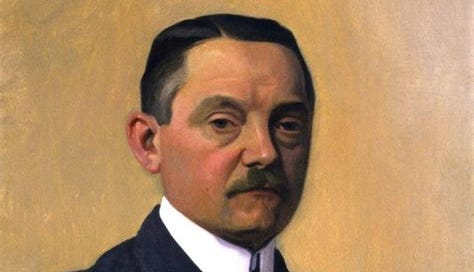



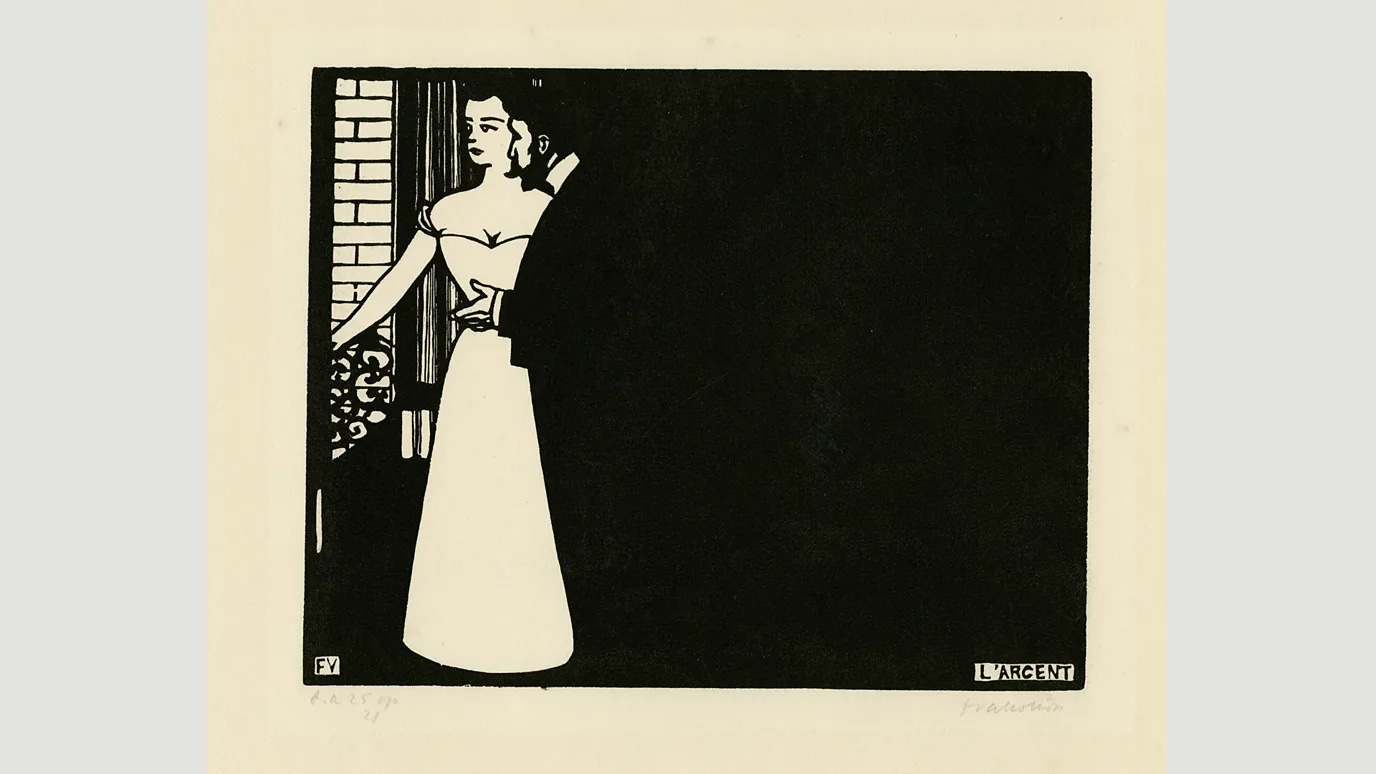
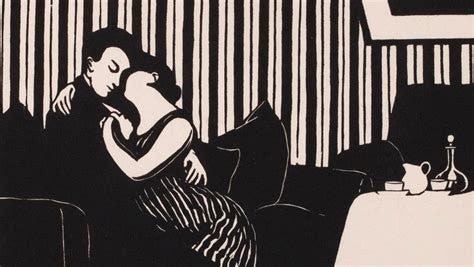
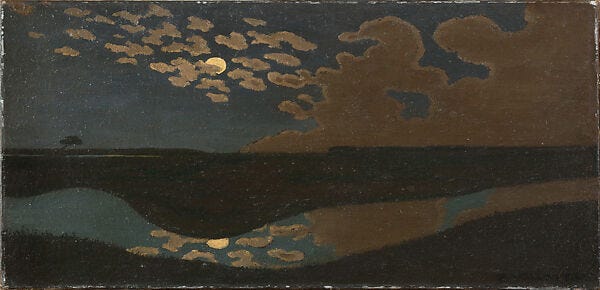
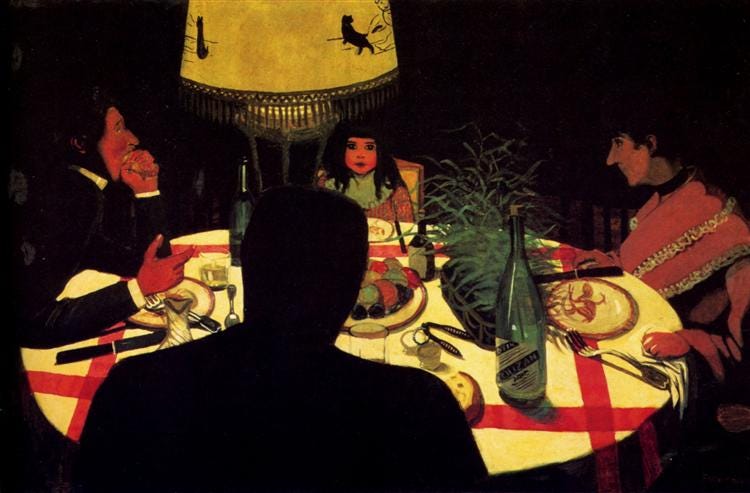
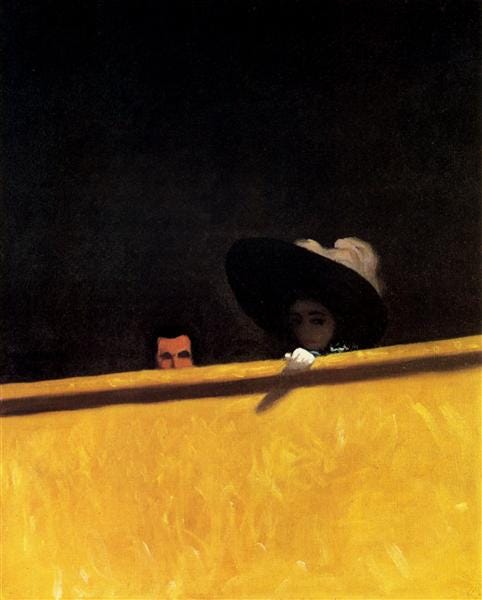
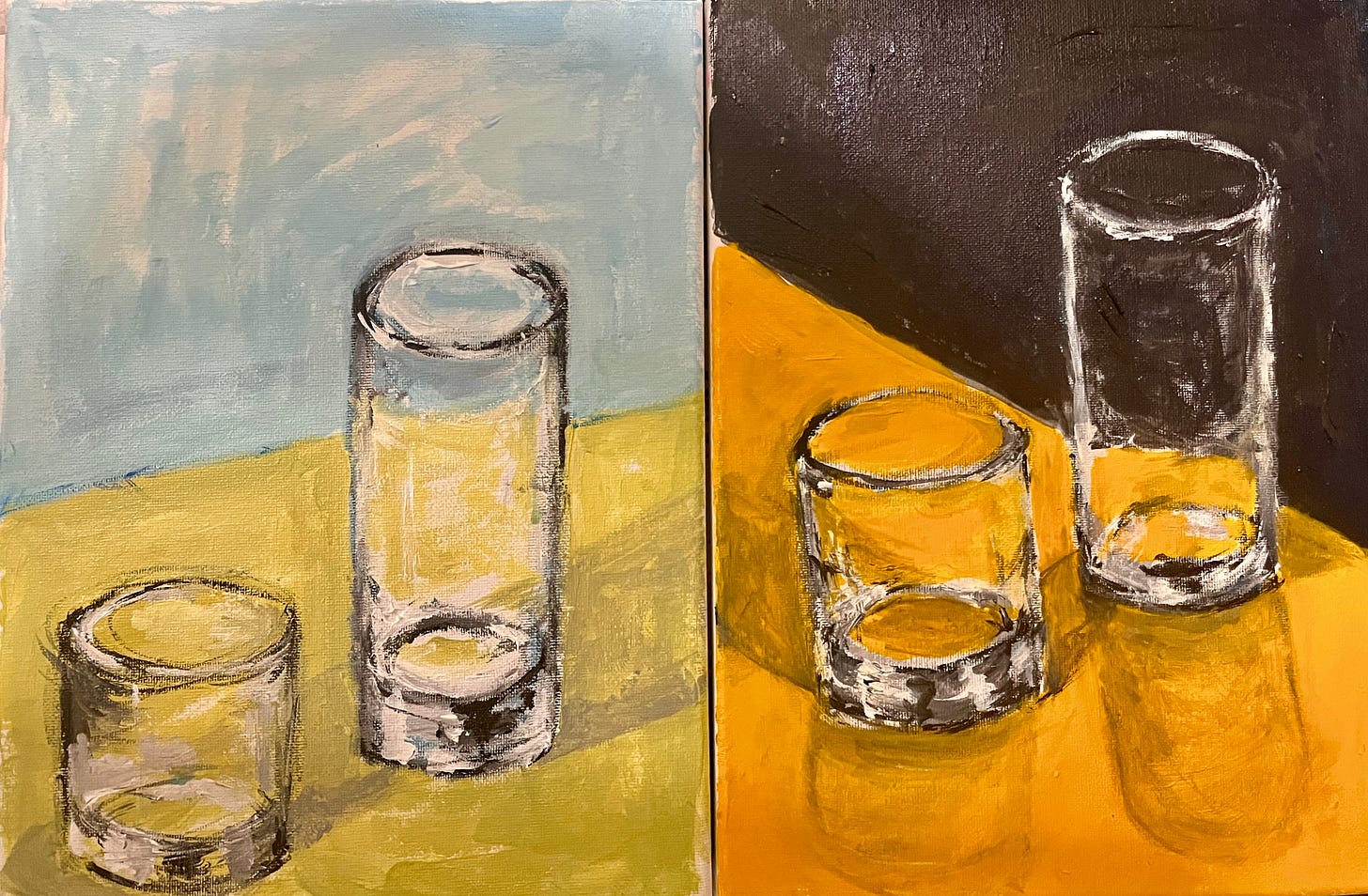
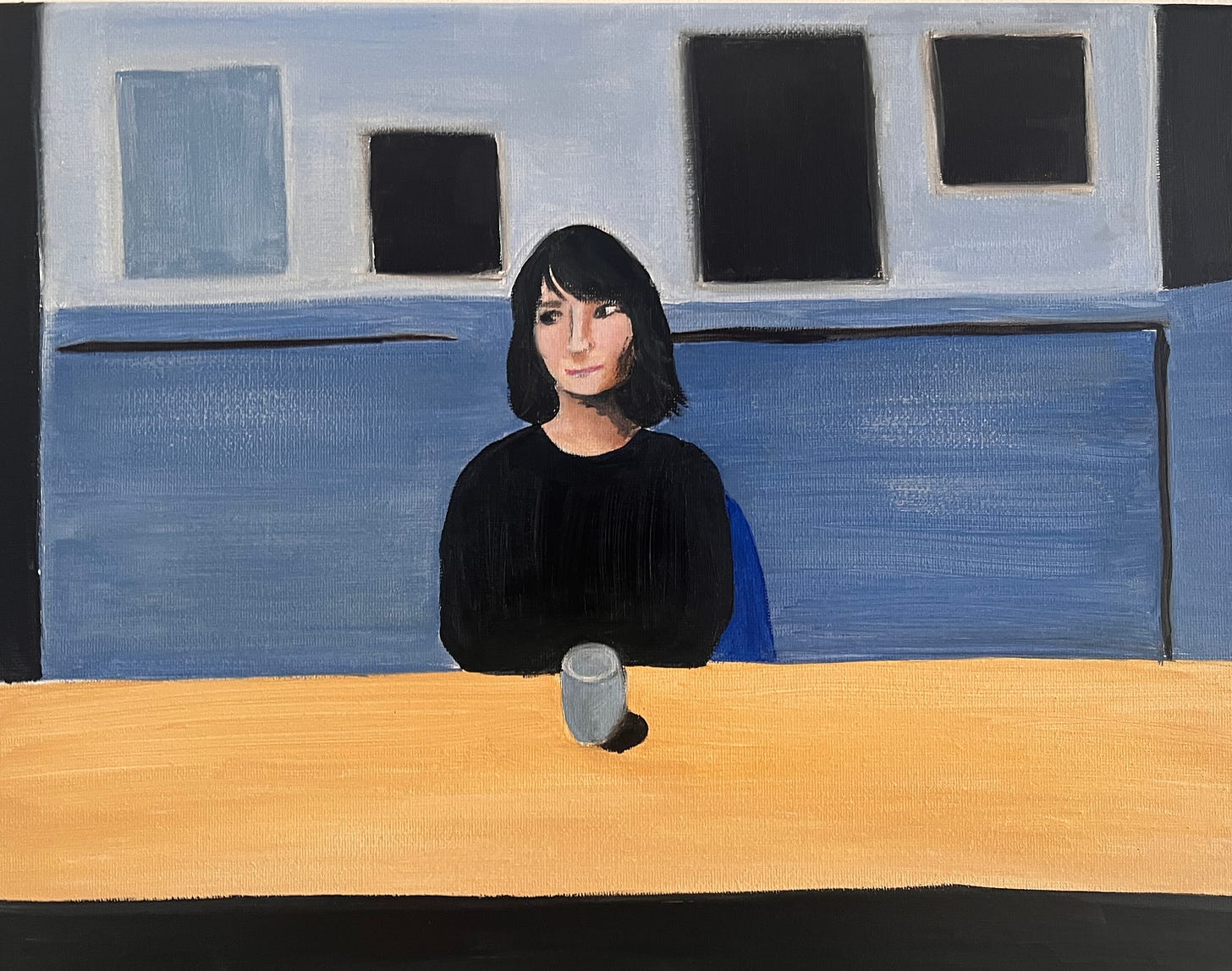
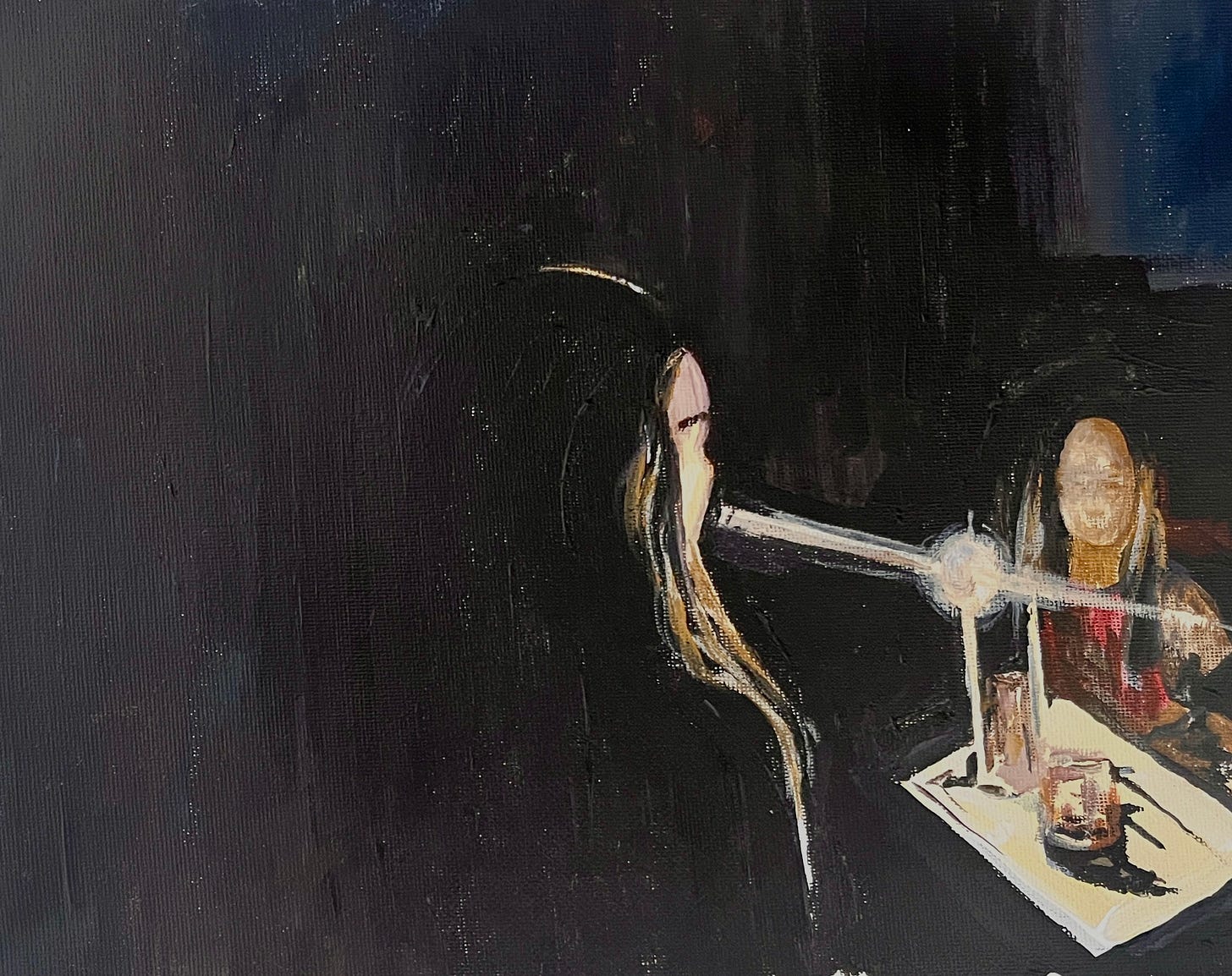
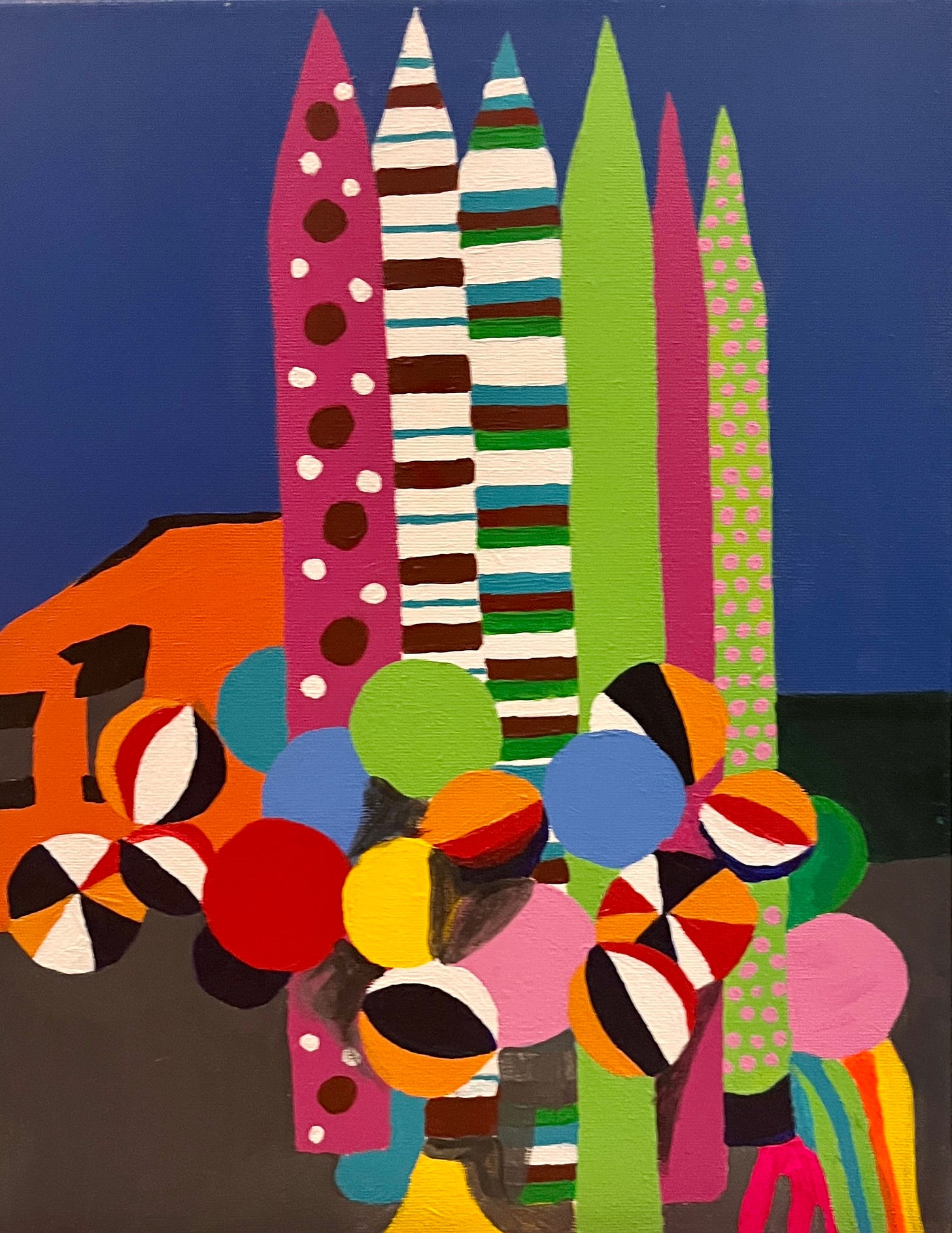
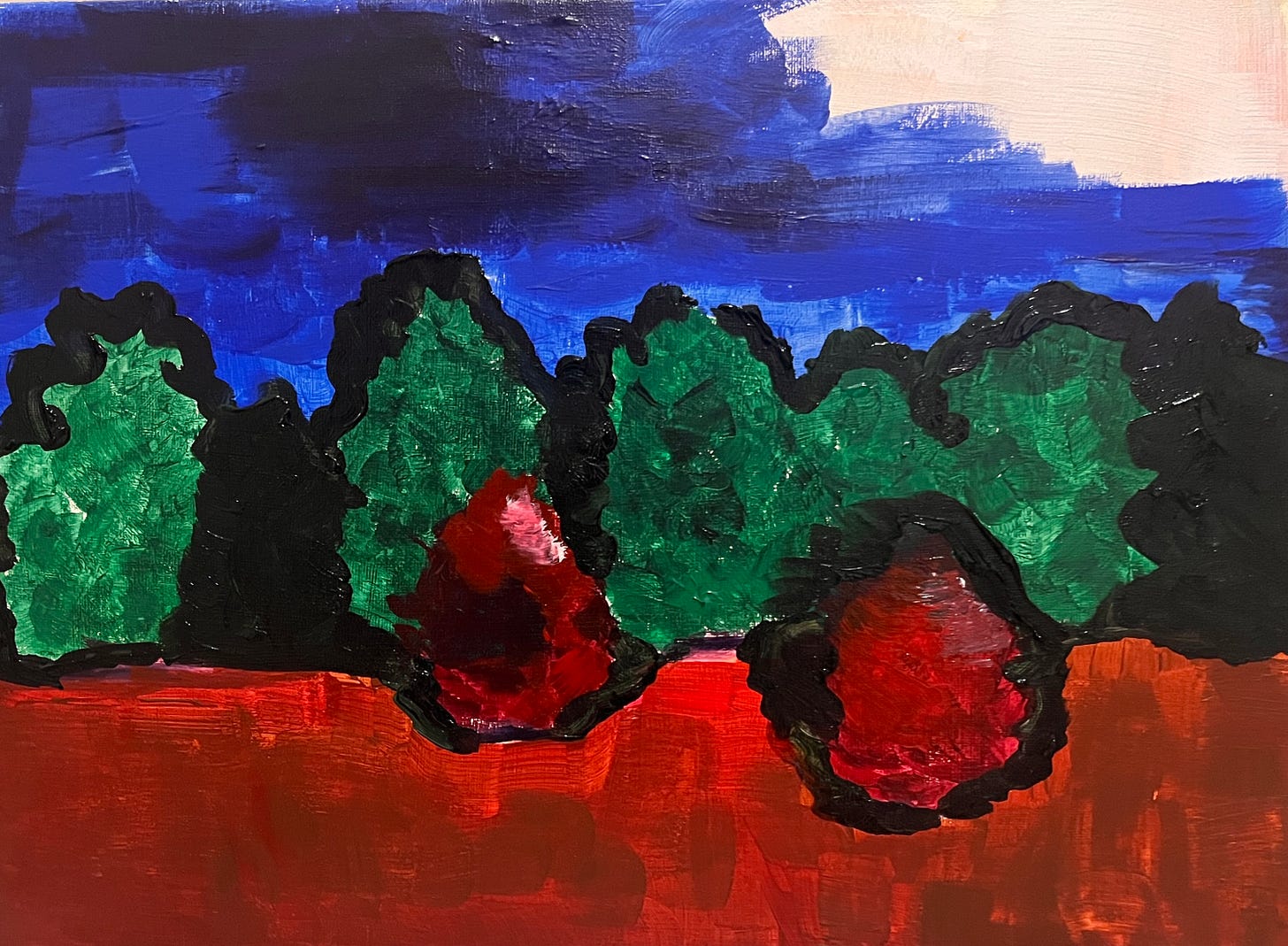
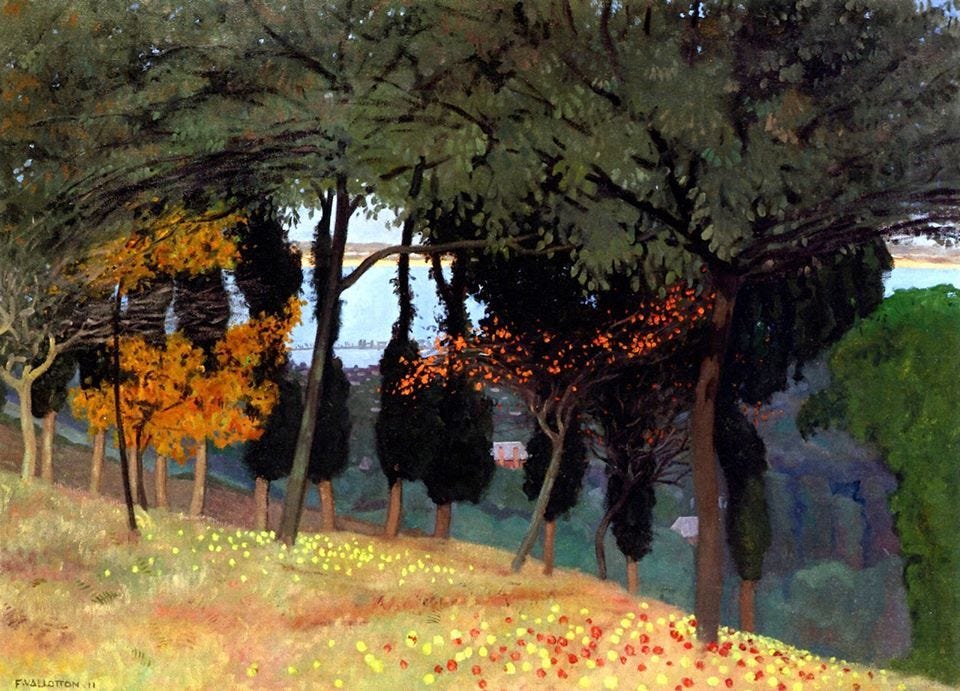
The paintings by the artists at your workshop are wonderful!